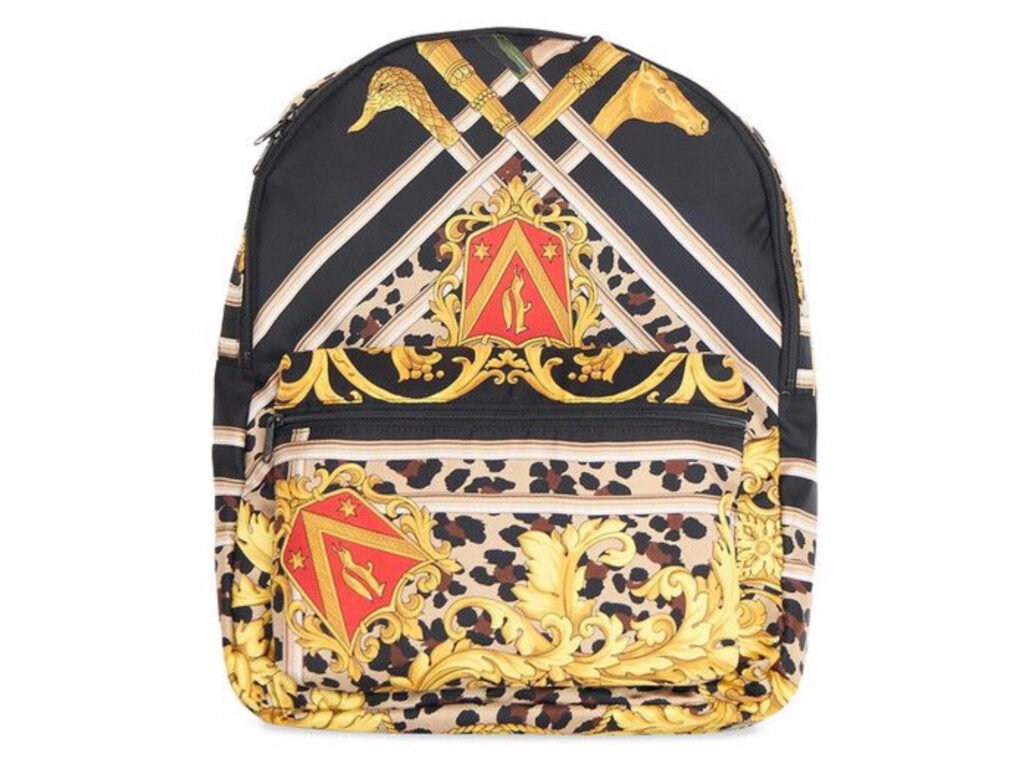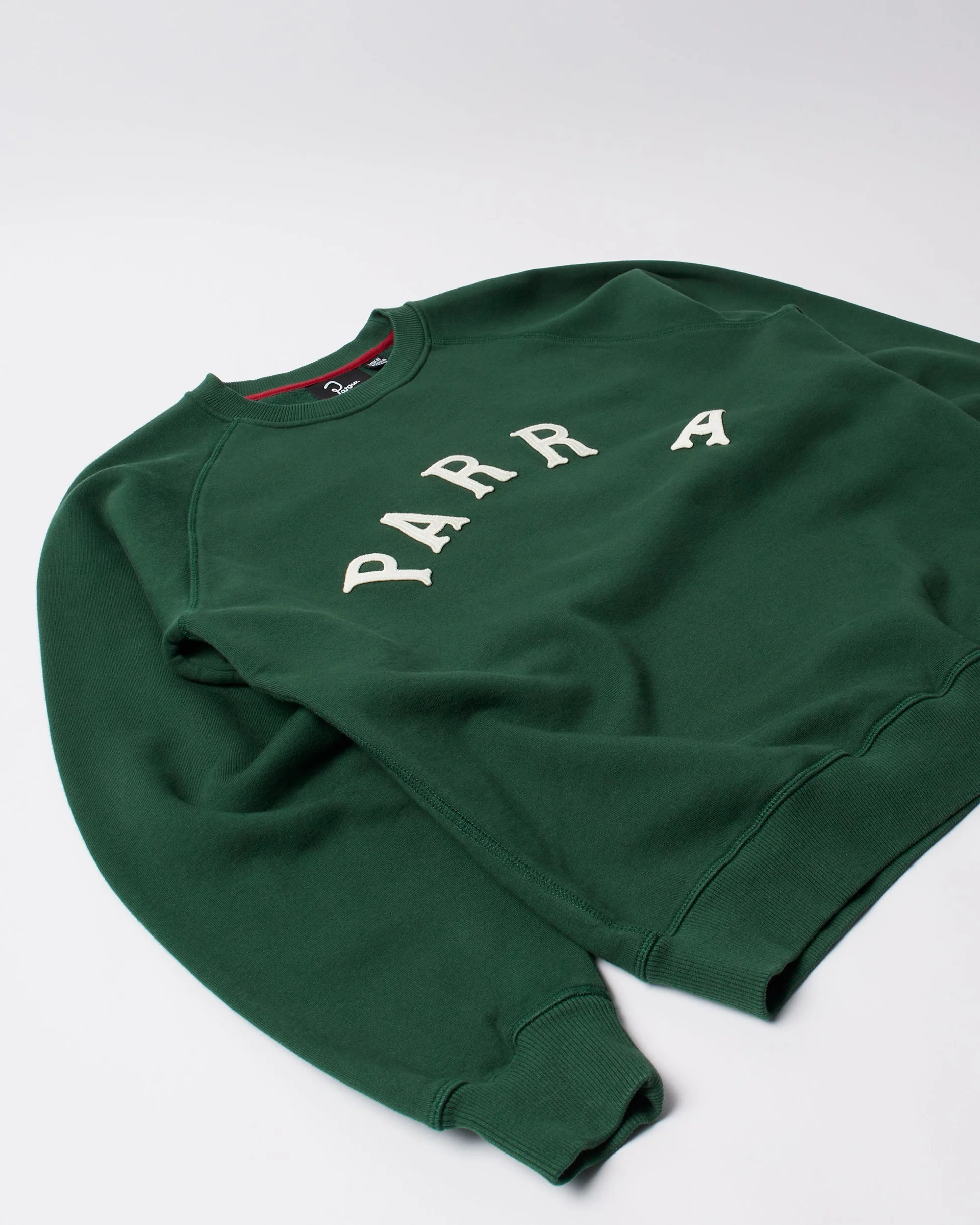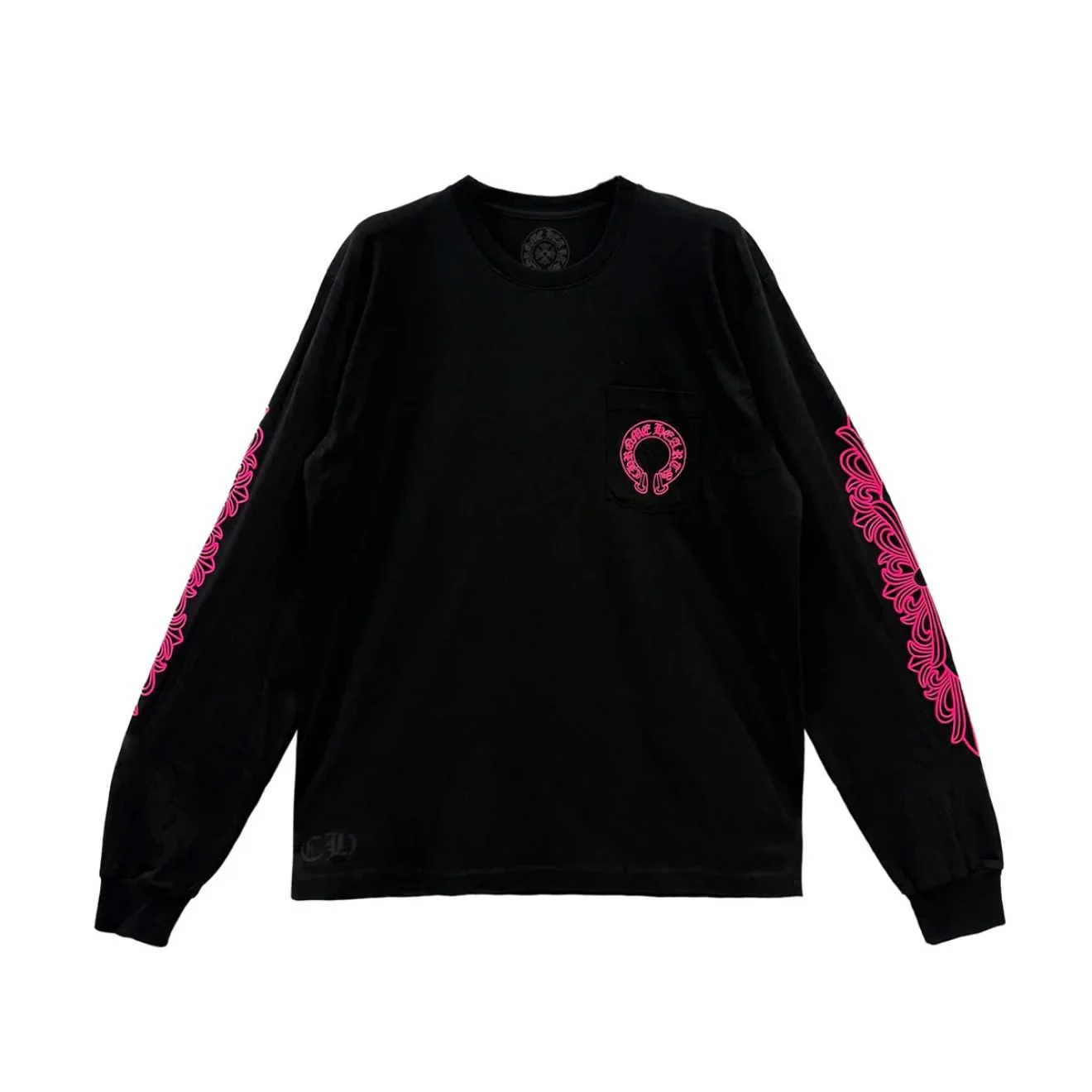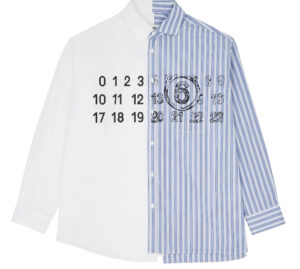In the evolving theater of contemporary menswear, where the silhouette of function collides with the texture of aesthetic inquiry, Junya Watanabe remains a constant provocateur—never loud for the sake of noise, but persistent in his ability to recode the ordinary. The Junya Watanabe MAN Silk Scarf Backpack in “multicolor” is a masterstroke in this dialect. What begins as a utilitarian object—a backpack—is subverted through the use of sensuous, high-fashion materiality and compositional collage, resulting in a wearable contradiction: soft and structured, street-ready yet artisanal, practical yet impractically beautiful.
It’s not a bag you carry to blend in. Nor is it one you wear to shout. It exists in that rare liminal space of emotional resonance, where garments speak not to trends but to temperament. With its patchworked silk panels, richly saturated colors, and fragmented scarf prints, the piece seems to narrate an epic of cosmopolitan wanderlust—calling upon Parisian couture heritage, Tokyo streetwear grit, and postmodern deconstructionism. This isn’t simply a bag; it’s a woven novella.
Function as Fiction: Reimagining the Backpack
The core structure of the Junya Watanabe MAN Silk Scarf Backpack adheres to the traditional format: two shoulder straps, a spacious main compartment, and a frontal utility pocket. But beyond this familiar silhouette lies the fiction Watanabe constructs—a fiction that asks: what happens when you replace technical nylon or rugged canvas with delicate silk?
The result is a disruption of expectation. The silk, a textile more at home on the necks of aristocrats or the bodies of runways, carries with it a history of elegance and fragility. Watanabe reorients this history. He turns the silk scarf—once a sign of refinement, of stillness—into something mobile, volatile, even punk. The backpack becomes a symbol not of the hiker or the commuter, but of the drifter-artist, the soft rebel, the intellectual flâneur. It’s a return to movement as luxury.
And yet, for all its poeticism, the bag is sturdy. Reinforced canvas lining and leather trims ensure durability. Watanabe’s genius lies not in eschewing utility but in folding it beneath an exterior of misdirection. You wear it like silk, but you live with it like leather.
The Archive is Alive: Collage as Memory Map
Visually, the backpack operates as a living archive. Each scarf panel, drawn from disparate sources and decades, contributes to a larger whole that is not meant to match—but to resonate. There are paisleys, geometric tessellations, baroque florals, and abstract shapes in jewel tones and burnished metallics. These are not prints designed to align. They are designed to interrupt, overlap, and converse.
This technique—patchworking non-matching elements—is signature Watanabe. It reflects his ongoing dialogue with the notion of fragmentation, of postwar Japanese reconstruction, of Western excess filtered through Eastern restraint. The silk scarf, long associated with bourgeois femininity, is reclaimed here as a genderless medium of story and rebellion. The use of multicolor is not merely aesthetic but archival: each shade, each fragment is a portal to another reference, another city, another visual era.
In this sense, the bag becomes topographical. It is a landscape of cultural texture. Each time the wearer dons it, it becomes a different story depending on light, clothing, and geography. It is travel gear for the style nomad—both literal and psychological.
Junya’s Language of Disruption
To understand this backpack in its full depth, one must understand Watanabe’s broader project: the subversion of standard menswear through high-concept tailoring, fabric alchemy, and collaborations that blur the lines between brand and ideology. A protégé of Rei Kawakubo and a disciple of Comme des Garçons’ boundary-pushing DNA, Watanabe has long wrestled with the tension between craft and chaos.
And here, in the Silk Scarf Backpack, this tension is resolved—not by compromise, but by contradiction. It is not a hybrid, but a battleground. The silk refuses to behave; the structure refuses to collapse. The form is not democratic, but intimate—made for a specific wearer who understands not only the visual language but the subtext. It’s a piece that looks best worn over a wrinkled linen shirt, indigo jeans, and a life lived outside the algorithm.
What distinguishes Watanabe is not simply his aesthetic choices but his philosophical ones. He’s not interested in dressing the moment. He’s interested in building garments and accessories that disrupt it.
Scarves and Skin: A Meditation on Touch
What also elevates this backpack is the question of tactility. Silk is not merely seen—it’s felt. The sensory relationship between wearer and object is intensified here, as the bag slides across the back or shoulder with a liquid, sensual motion. It crinkles softly when gripped. It shimmers under overhead light. Most backpacks are instruments of transit. This one is an act of adornment.
It invites touch not as a function of utility but of affection. One does not simply carry it; one holds it, caresses it, lives with it as one would a long-familiar textile relic. It’s hard not to imagine that it might be passed down, softened over time, embroidered further, personalized with stitches or pins. It is an object that asks to be lived in.
In that way, the scarf backpack transcends fashion and enters intimacy. It performs like clothing but operates like heirloom.
Decadent Nomadism: Styling the Silk
Styling the multicolor edition requires restraint and nerve. Worn with minimalist outerwear—say, a navy oversized coat or cropped technical jacket—it pops with intention. Paired with other patterns, it becomes anarchic, deliberate chaos. The person who wears this backpack is likely not interested in total cohesion. They are composing outfits like jazz: unpredictable but confident.
Footwear might range from Margiela Tabi boots to beaten-up New Balance 990s. Headwear might be a knit cap in muted wool or a bold-patterned turban. The beauty of the backpack lies in its unpredictability. It reads differently in Tokyo, in Berlin, in Lagos, in São Paulo. It has no singular visual allegiance, no allegiance to trend.
It offers freedom—not only to the body, but to the gaze.
Anti-Trend, Post-Fashion
Perhaps what’s most notable about this piece is how anti-trend it is. There is no logo forwardness. No Gen-Z aesthetic mimicry. It doesn’t fit the quiet luxury wave, nor the gorpcore obsession. It doesn’t align with Y2K nostalgia, nor does it bow to archival military wear.
It is, simply, Junya Watanabe—in the truest sense. A rare designer whose pieces don’t expire with the season. They exist on their own timeline, refusing to cater, refusing to explain. The Silk Scarf Backpack embodies this ethos with rare clarity.
It’s an accessory that refuses to be defined by any one genre, but instead expands the conversation. It questions what a man’s bag can be. What a scarf is. What silk should do. What multicolor means when it isn’t merely “loud,” but layered.
In Closing: The Luxury of Knowing
In 2025, fashion is oversaturated with reference. What makes the Junya Watanabe MAN Silk Scarf Backpack so radical is that it doesn’t merely reference—it remembers. It doesn’t chase narrative; it carries it.
To wear it is to step outside of algorithms and into authorship. It’s to value touch over hype, depth over flex. It’s to choose silk not for its sheen, but for its story. To carry memory instead of branding.
And in that act of carrying, the wearer becomes not a consumer, but a co-creator. The backpack is not complete until it is worn, weathered, and woven into the world. That’s not just fashion. That’s literature.
No comments yet.









